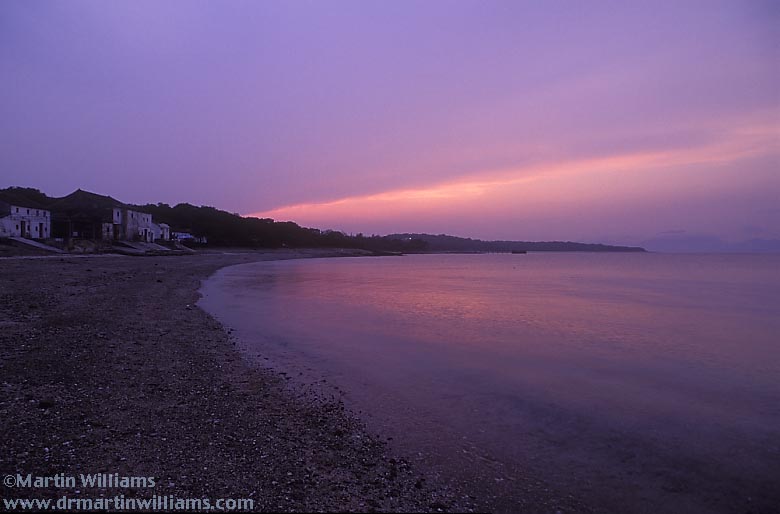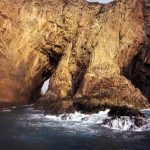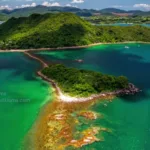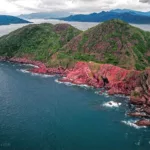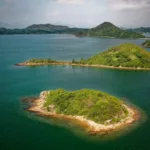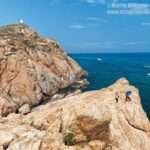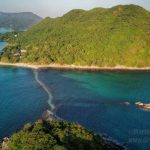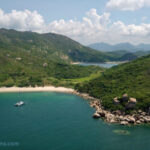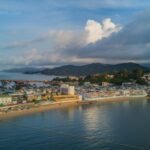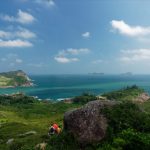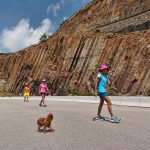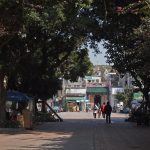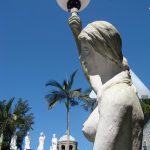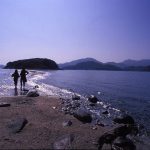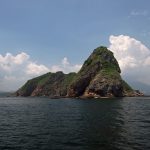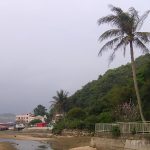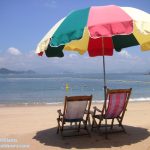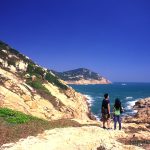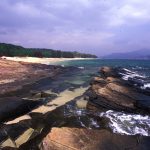Look at a map of Hong Kong, and in the northeast corner you should just see Tung Ping Chau – “East Flat Island”, the furthest-flung land in Hong Kong.
Look at a map of Hong Kong, and in the northeast corner you should just see a tiny, comma shaped island. This is Tung Ping Chau – “East Flat Island”, the furthest-flung land in Hong Kong. Though small and indeed without hills of the kind typical of local islands, it makes for a rewarding day out – for roaming on land and, perhaps, enjoying a swim now the weather is warm.
Unwind on the East Coast

You arrive at a pier on the sheltered east coast. Look down, and you may see colourful fish, and coral heads – signs of the rich marine life that led to waters around the island being designated as one of Hong Kong’s four marine parks.
Waves lap against orange-tinted rock that’s eroding to form angular slabs and blocks. Unlike the volcanic material forming most of Hong Kong, this is a sedimentary rock – mudstone. Formed around 65 million years ago, from silt that accumulated in a basin that’s now present day Mirs Bay, it’s the youngest rock in Hong Kong.
There’s a coastal path, and perhaps many people will head south, making for popular rock forms. Maybe, then, you can first turn right, to have a look at the north of the island.
The path soon leads to the island’s main surviving hamlet, Tai Tong. But unless there’s a very high tide, you can follow the shoreline, where there are beaches interspersed by more areas of mudstone.
Fragments of dead coral abound on the beaches, and you may find larger coral heads that may have been torn from the seabed during storms. Though there are no lifeguards, this is a good place for snorkelling. Even in shallow waters, you should find living corals shaped like vertical plates and exotic castles, along with sea urchins, fish and other creatures.
Here, Tung Ping Chau can seem like a classic tropical island, far from the city. But you only have to glance east to remember you’re not in paradise: on the close by Dapeng Peninsula are beach resorts, and a large terminal for liquefied petroleum gas tankers.
Explore the Hamlets

Today, it seems no one lives on Tung Ping Chau. Visitors and former residents only come at weekends and on public holidays, so on weekdays this must be a solitary place for the few Marine Police stationed here. But in the past, the island was reportedly home to around a thousand people, who fished, cultivated crops including peanuts, vegetables and fruits, raised cattle and – I’ve heard – indulged in a spot of smuggling.
The islanders built houses with walls of mudstone blocks. A few of these are still maintained, such as in Tai Tong, where former family homes now serve as simple but bustling restaurants. Others have been abandoned, and are in various stages of ruin.
It’s fascinating to explore the old hamlets. You can find some deserted places by walking short trails into the island’s interior – where you can never go far, given the island is just 200 metres wide. Some buildings have collapsed, others are tumbledown, but there are a few you can walk into through gaping doorways, and perhaps find the remnants of stone stoves along with utensils like clay jars.
In such places, it’s wise to have repellent against mosquitoes. Plus, ants may abound. They nip rather than sting, but still encourage me to walk briskly where they occur.
Walk on the Dragon
West Tung Ping Chau is rougher hewn, with low cliffs, and small coves where the beaches are of gravel rather than sand – as this coast is exposed to waves surging in from the South China Sea.
At one place in the northwest, waves have sliced through joints in the rock, and almost created a new, tiny island, Chan Keng Chau.
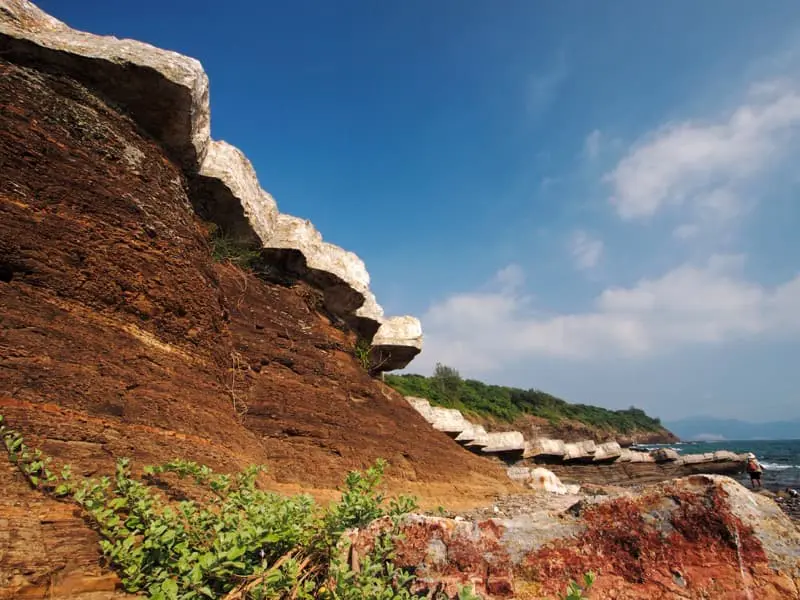
South from here is the main feature along this coast: a rock formation known as Lung Lok Shui: Dragon Descending to the Sea. But don’t head here expecting an imposing structure reminding you of the mighty Smaug in Hobbit movies. Instead, there’s a mini escarpment – not much taller than a person – dipping beneath the waves.
The “dragon” is capped by a band of serrated band of chert, formed of microcrystalline quartz that’s more resistant to erosion than the mudstone. It’s a popular place for taking photos, and a good spot to rest and enjoy the scenery. There are no buildings in view from here; Hong Kong hills including Sharp Peak seem far away on the western horizon.
Stroll Through the Glades
Though woodland is taking over the island’s old fields, with some trees even sprouting from the walls of deserted buildings, it’s not so dense as the jungle like woods found elsewhere in Hong Kong.
Especially along the southwest coast, the coast walk becomes a pleasant woodland trail, with brightly lit grassy fringes. You might find butterflies including big, colourful swallowtails. Cicadas sing out their rasping din, and are even heard in late autumn – as Tung Ping Chau is the only place in Hong Kong that’s home to an autumnal cicada species.
Though there are few resident birds, the island attracts migrants such as warblers, flycatchers and thrushes.
There’s even a tiny reservoir amidst the woods, by a path leading across the island from Sha Tau, south of the pier. In dry spells it’s waterless and unattractive. But after rains a picturesque pool forms, in summer becoming a magnet for hordes of small frogs that appear from the undergrowth.
Wander by the Watchtowers
The highest point of Tung Ping Chau is a modest 48 metres above the sea, atop south facing cliffs. East of here, the path tumbles down to the fringe of a wave-cut platform, where the key features are the Ping Chau Watchtowers.
These “watchtowers” are actually two sea stacks standing close together. The room-sized chunks of rock have resisted the waves that have sliced into the island here, and today draw visitors who admire, photograph and clamber upon them.
Though to geologists this is a wave cut platform, it is not a smooth plane, but marked by a succession of pools where rock fragments have been ripped away along boundaries between mudstone layers. These can be worth investigating for marine life, such as nudibranchs, which are also known by the unappealing name of “sea slugs”, though they can be fascinating, colourfully patterned creatures. There may also be handsome fish, and corals in pools exposed at very low tide.
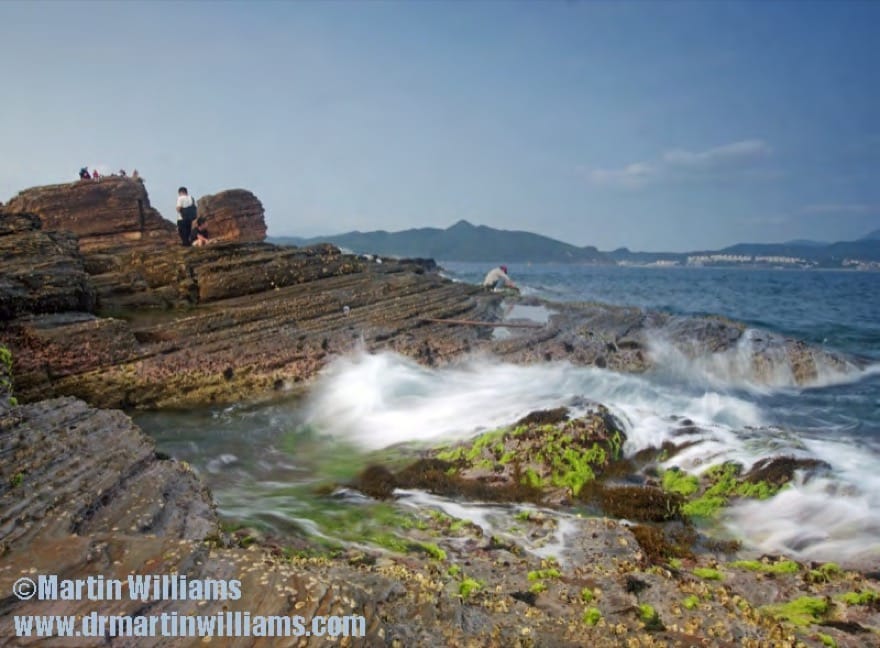
From here, there’s a coastal walk back to the ferry pier. If time permits, perhaps have a try at a Tung Ping Chau “water sport”: skimming stones. The mudstone erodes into flat pebbles that are ideal for skimming across the water, and might skip 15 times or more before vanishing into the sea.
Getting There
Tung Ping Chau is served by ferries operated by Tsui Wah Ferry Service. They depart Ma Liu Shui pier, around 15 minutes walk from University East Rail station, at 9am on Saturdays, Sundays and public holidays; HK$90 return. The journey takes 1hr 40mins, and return ferries typically leave the island at 5.15pm. It’s advisable to arrive early, as ferry seats are limited and the island outing has become extremely popular.
